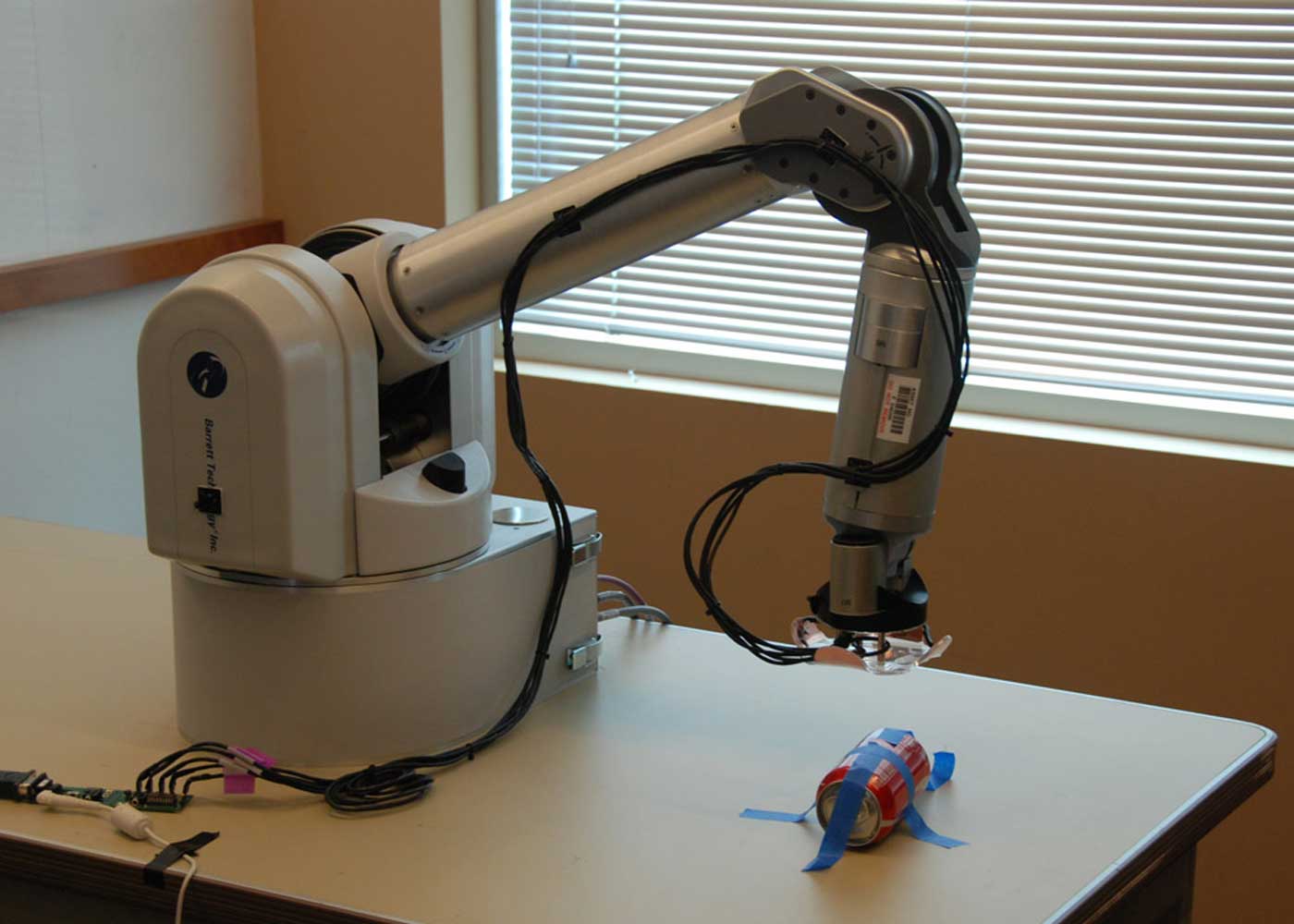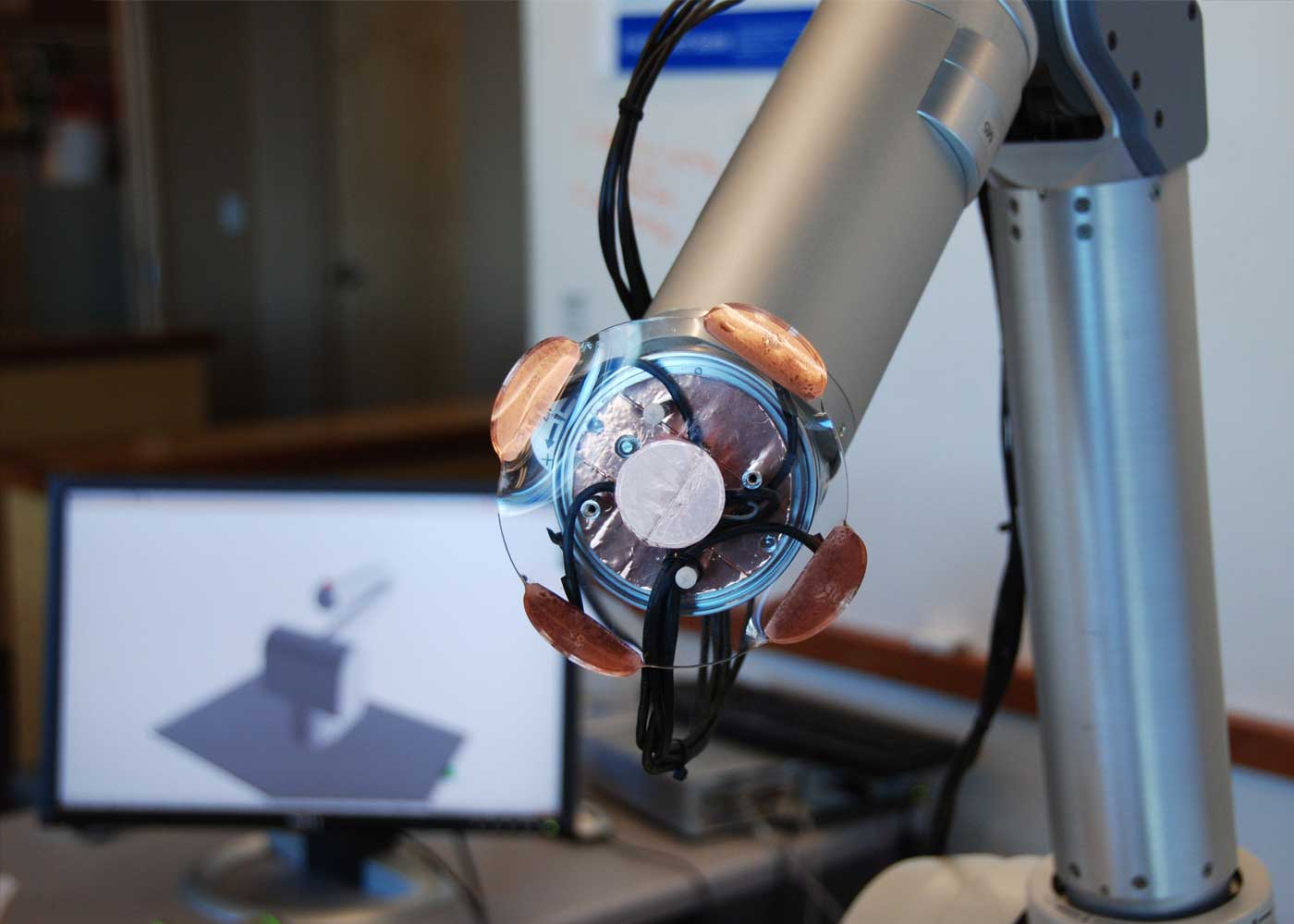Robotic Arms at Intel Research




Robotic Arms at Intel Research
I worked for Intel following my undergraduate education and left after getting into the graduate program at MIT. Intel in the early 2000s set up labs in Seattle at the University of Washington, but also at Berkley and CMU. Most of my work earned enough attention to enable me to travel to conferences and symposiums where I was able to meet many world-class researchers. One of the major projects I worked on during this time is this robot arm with force feedback and electric field sensing. The arm uses capacitive sensing to detect a person. The demo video below shows capacitive sensing being used to track a piece of fruit, but it can also be used to safely navigate around a person.
I worked on the lower levels of control for the arm, specifically control systems for joints. Each DOF or Degree of Freedom of the robot arm compensates for the force of gravity using force control feedback. This is known as gravity compensation in the robotics community. Each joint also has a virtual spring mass damper system with variable tuning which enabled the arm to be compliant. Contributions from me include a data visualization framework that was used for the system. I also programmed the lowest real-time layers and network stack in RT-Linux. A task that required DSP, controls, and critical thinking around testing. My software stack was used to enable a number of demonstrations including the one given to Arnold Schwarzenegger and Angela Merkle below.